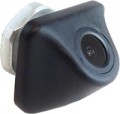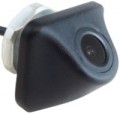Sensor type
The technology by which the matrix is made is the photosensitive element of the camera.
—
CMOS. Also known as CMOS; both of these entries are abbreviations of the same term, only in different languages (English and Russian). Without going into details, it is worth saying that CMOS matrices are notable for their low cost, compactness, good image processing speed and low power consumption, however, due to the design features, they are prone to the appearance of noise in the image, and therefore somewhat lose CCD in terms of image quality.
—
CCD. CCD-type matrices (CCDs) are somewhat more complicated and more expensive than CMOS, but they provide better image quality, including in low light conditions — in particular, due to the low level of noise. This is due both to the low level of heating during operation, and to the uniform light sensitivity of each pixel (whereas in CMOS it can “walk” a little).
—
HCCD. A variant of the CCD technology described above, featuring improved sensitivity and even better picture quality in low light.
Camera angle
The viewing angle characterizes how wide the area of space is captured by the camera lens: the larger
they are, the wider the field of view, the more space is in the frame. In most modern models, it varies from 120° to 170°; this allows good visibility of almost the entire rear hemisphere. There are 180° cameras and even more; they will come in handy if visibility is important to you not only from behind, but also on the sides. But note that some manufacturers indicate the angle horizontally, while others — diagonally.
At the same time, it does not always make sense to chase wide angles. Note that the larger the viewing angle, the more distant, reduced the image looks, the more distortion occurs at its edges. In addition, wide viewing angles require high resolution, which accordingly affects the price of the camera; if the resolution is low, the "picture" may look blurry and small details will be lost on it.
Min. illumination
The lowest ambient light level at which the camera can provide a normal image without additional illumination. In modern models, this indicator varies on average from 0.01 lux (clear night at a quarter moon) to 3 lux (deep twilight).
The lower the minimum illumination, the better the device handles with low light. However, note that in the absolute majority of cases, car cameras at night are used together with car lighting devices: front ones (see "View type") — with main headlights, rear ones — with reversing lights. Therefore, this parameter is rather general reference or even advertising information, rather than a really significant characteristic.
Image mode
The format for displaying the image on the connected screen. For each type of review (see above), there is a different option that is optimal.
— Direct. The traditional way of displaying an image: the user sees on the screen the same thing that the camera lens "sees" in front of him, with the same arrangement of the details of the situation. Simply put, if some object is located to the left of the centre of the camera's field of view, it will also be visible on the screen on the left side. All front view cameras work this way.
— Mirror. In this mode, an image is displayed on the screen that is “mirrored” horizontally — roughly speaking, one in which “left” and “right” are reversed: an object to the left of the camera lens will be visible on the right side of the screen, and vice versa. All cameras with a rear view type work in a similar way. This is due to the fact that in an ordinary rear-view mirror the driver sees exactly the picture inverted horizontally; therefore, in order for the sides of the picture on the screen to correspond to the usual view in the mirror, the image coming from the camera has to be “mirrored”.
— Direct / mirror. Cameras capable of operating in any of the picture modes described above. Usually, these are universal models (see “Installation”), which formally refer to the rear view type in our catalog (see above), but also allow front view.

